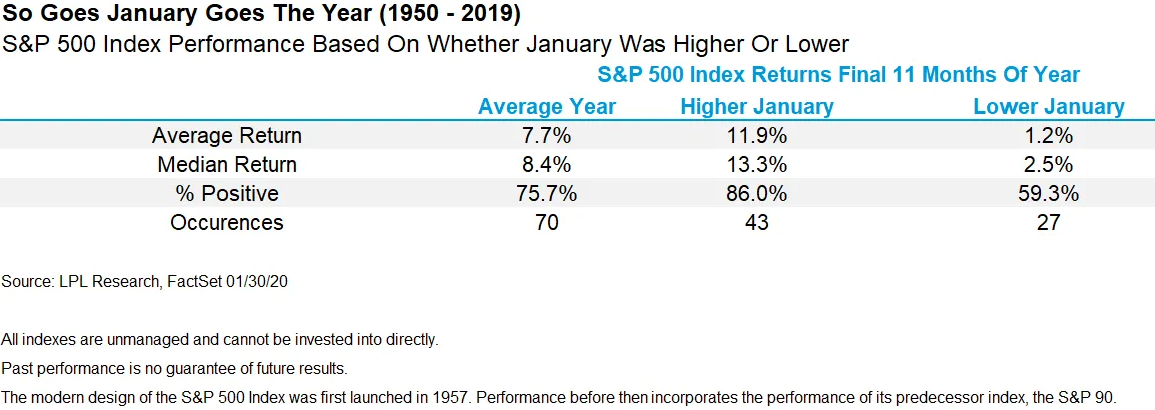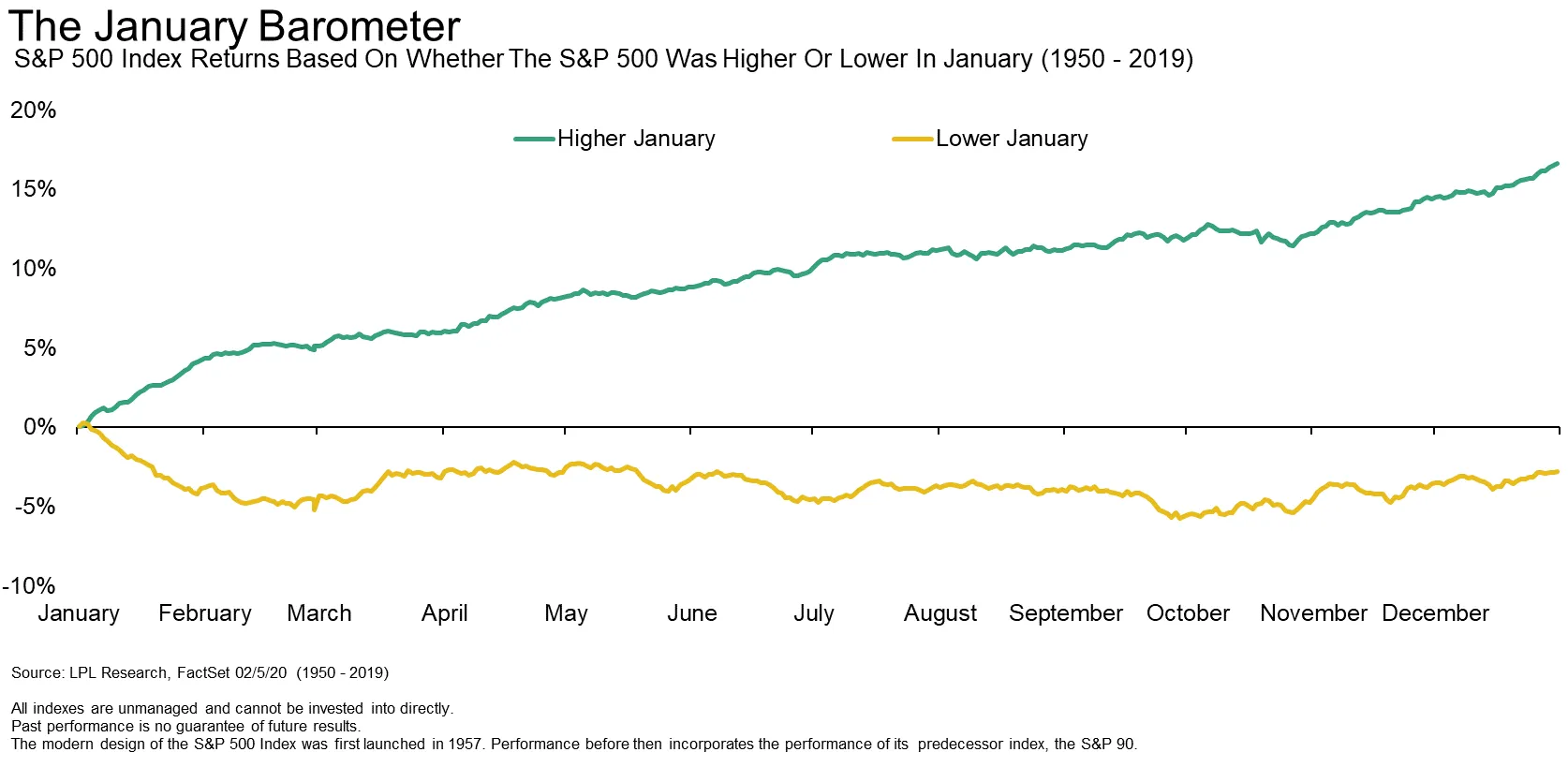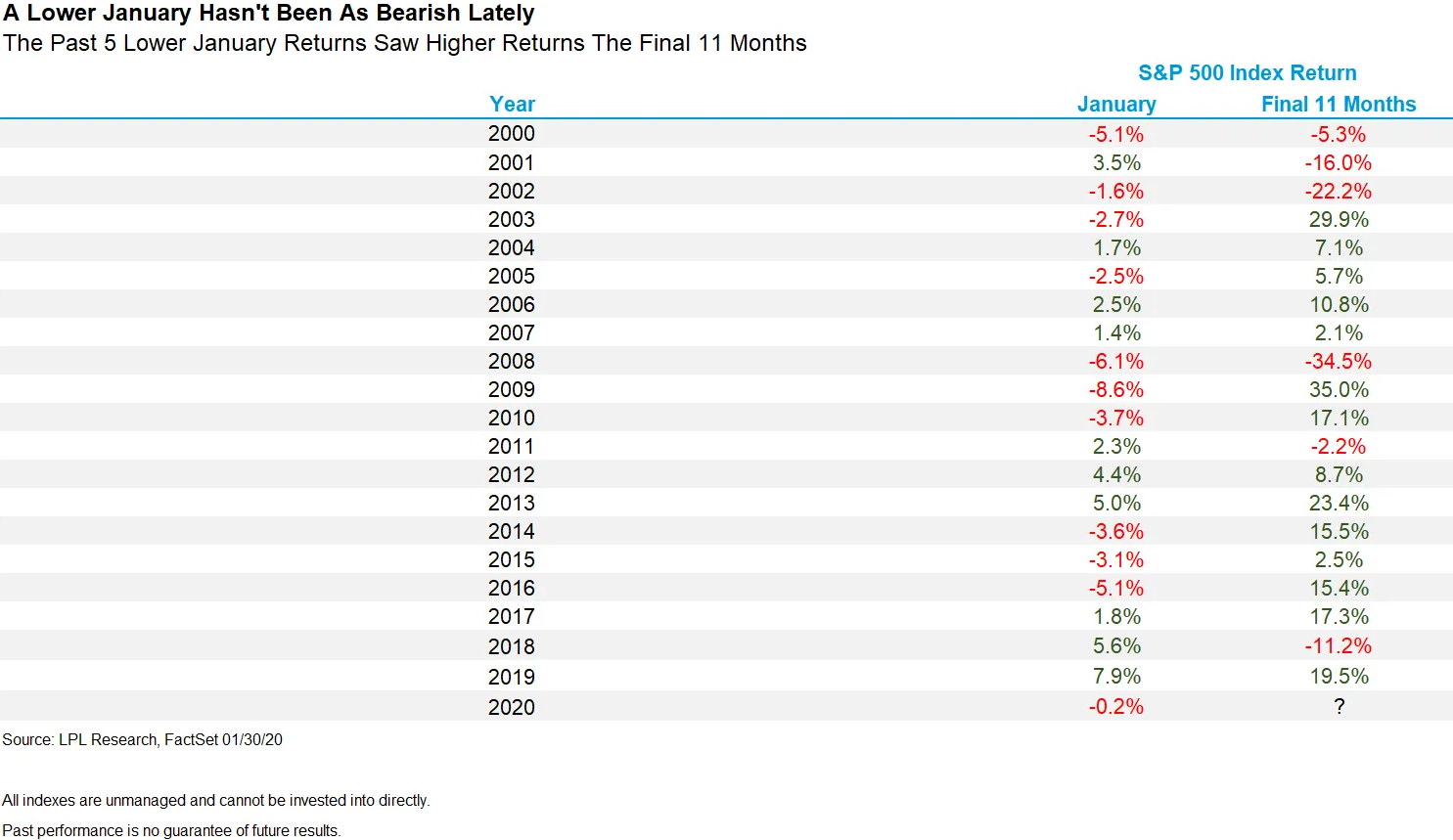Stocks got off to a nice start in 2020, until the late January selloff due to the coronavirus outbreak fears. In the end, the S&P 500 Index fell only 0.2% for the month, but it did mark the end to a four-month win streak. Should bulls worry about what a down January might mean for the rest of 2020?
There’s an old adage on Wall Street that suggests, “As goes January, so goes the year.” This was first discussed in 1972 by Yale Hirsh of the Stock Trader’s Almanac, and it has an impressive track record. Simply put, when the first month of the year was green, it bodes well for the rest of the year (and vice versa). Given stocks closed red in January, how worried should investors be?
As shown below in the LPL Chart of the Day, the numbers confirm that when the S&P 500 has been green in January, the index has been up 11.9% on average over the rest of the year (final 11 months) and higher 86% of the time. However, when that first month was red, stocks rose only 1.2% on average over the final 11 months and were higher less than 60% of the time.

Another way to look at this data shows the average full year return based on if stocks are higher in January or not. As you can clearly see, stocks have tended to have trouble gaining any traction over the rest of the year after a January loss, while a green January has been quite strong.

It isn’t all bad news though. Remember the S&P 500 was down only 0.2% in January, so one could argue that it was really flat. “Yes, a lower January is a potential worry for the bulls,” explained LPL Financial Senior Market Strategist Ryan Detrick. “But it is worth noting the previous five times (and seven of eight) when stocks were lower in January, those final 11 months rallied. So this might not be the clear cut bearish signal so many think it is.”

Ryan Detrick is senior market strategist for LPL Financial.








